Subaru Ascent Vs Honda Pilot: Can Subaru's Newest Seven-Seater Crossover Beat The Honda?
Competition has never been more fierce in the market for mid-size SUVs with three rows of seats.
These practical vehicles are quickly taking over from minivans as a top choice for family drivers who need seats for seven or eight people.
The Honda Pilot is a long-time player among three-row mid-size models. Introduced in 2003, it was one of the first examples of a crossover SUV with seating for seven or eight, predating many other utilities that have since become popular, like the Nissan Pathfinder, Kia Sorento, and Chevrolet Traverse.
Get a Quote on a New Honda Pilot or Subaru AscentSubaru has less experience in this segment. It introduced its Ascent model in 2019 after a five-year absence from the category. Its previous three-row vehicle was the Tribeca, which didn’t attract many buyers. However, we think the Ascent’s more conventional design makes it an easier sell and a stronger competitor for established vehicles like the Honda Pilot.
If you’re in the market for a practical family vehicle that offers the all-weather confidence of AWD, read on for a detailed specs comparison of the 2021 Honda Pilot and 2021 Subaru Ascent.
Cabin Space
Ascent: In the Subaru Ascent, you get 41.3 inches (1,049 mm) of headroom in the front seats. The second row offers 40.0 inches of headroom (1,016 mm) and the third row has 36.3 inches (922 mm).
But if you option the Ascent with Subaru’s available panoramic sunroof, you lose a bit of headroom. In these versions, headroom in the front and second rows is reduced to 40.1 inches (1,019 mm) and 38.7 inches (983 mm) respectively, but third-row headroom remains the same at 36.3 inches (922 mm).
Subaru Ascent legroom is 42.2 inches (1,072 mm) for front-row occupants, 38.6 inches (980 mm) in the second row, and 31.7 inches (805 mm) for those riding in the third row.
Pilot: The Honda Pilot’s LX and EX trim levels offer you the most headroom, at 40.1 inches (1,019 mm) in the front seats, 40.2 inches (1,021 mm) in the second row, and 38.9 inches (988 mm) for third-row occupants. In EX-L and higher trims, the Pilot’s sunroof reduces front and second-row headroom to 39.5 inches (1,003 mm) and 39.9 inches (1,013 mm), respectively, while third-row headroom remains the same.
Honda Pilot legroom is 40.9 inches (1,039 mm) in the front seats, 38.4 inches (975 mm) in the second row, and 31.9 inches (810 mm) for the third row of seats.
SEE ALSO: 2020 Subaru Ascent ReviewBottom Line: Subaru narrowly wins this category for its more generous front-seat headroom, though that advantage is eroded slightly when comparing Ascent and Pilot models with a sunroof. However, if you plan to regularly use the third-row seats in your mid-size SUV, the Honda Pilot has 2.6 inches more headroom back there, along with a little bit more legroom.
Cargo and Towing
Ascent: Subaru says the Ascent’s maximum cargo capacity is 86.5 cubic feet (2,449L) behind the front-row seats, with the second and third rows folded. Behind the second-row seats is 47.5 cubic feet (1,345L) of cargo space, and with all three rows of seats in place, you can stow 17.8 cubic feet (504L) behind the third row. If you option an Ascent with the available sunroof, Subaru says you lose a nominal amount of cargo space in all configurations.
The Subaru Ascent will tow as much as 5,000 lbs in its Premium, Limited and Touring trim levels. The base model is only rated for 2,000 lbs of towing capacity.
Pilot: Honda measures the Pilot’s cargo capacity to a maximum of 83.9 cubic feet (2,376L) behind the front-row seats. Behind the second-row seats, you can fit 46.8 cubic feet (1,325L) of cargo, and there’s 16.5 cubic feet (467L) behind the third row.
With the Honda Pilot, you can tow 3,500 lbs in a front-wheel drive model, and 5,000 lbs with the optional AWD system.
Bottom Line: This contest is a tie. Subaru has a small advantage in cargo volume, but the Pilot’s base model can tow more than the entry-level Ascent, while both boast a maximum tow rating of 5,000 lbs.
Powertrains
Ascent: Subaru offers a single powertrain setup for all versions of the Ascent. It starts with a 2.4L turbocharged four-cylinder good for 260 hp and 277 lb-ft of torque. Subaru’s symmetrical AWD system is standard in all trims, as is a continuously variable automatic transmission.
Pilot: All Honda Pilot trim levels use a 3.5L V6 engine that makes 280 hp and 262 lb-ft of torque, and uses an idle-stop system and variable cylinder management to help save fuel. A nine-speed automatic transmission and front-wheel drive are standard in most trims. The top Elite model includes Honda’s i-VTM4 AWD system, which is optional elsewhere in the lineup.
Bottom Line: The advantage here goes to Subaru for its standard AWD traction.
Fuel Economy
Ascent: Subaru estimates the Ascent’s EPA fuel economy at 21 mpg city and 27 mpg highway for its base and Premium trim levels. Ratings for the uplevel Limited and Touring models are 20/26 mpg.
Pilot: The front-wheel drive Honda Pilot is the more efficient version of this mid-size SUV, with EPA fuel economy ratings of 20 mpg city and 27 mpg highway. With AWD, the Pilot’s EPA estimates are 19/26 mpg city/highway.
Bottom Line: Subaru ekes out a narrow win in the fuel economy category. The base Ascent – with standard AWD — is more efficient in city driving than a front-wheel drive Honda Pilot, and Subaru maintains that advantage when you add AWD to the Pilot – despite the Ascent’s upscale Limited and Touring trims being a bit less efficient than the model’s entry-grade base and Premium trims.
Safety
Ascent: All Ascent trims come standard with Subaru’s EyeSight package of driver safety assists. Those comprise forward collision detection with automatic braking, lane departure warning, radar cruise control, and a lane centering function. Automatic high beams and tire pressure monitoring are included, as are steering-responsive headlights, a feature most automakers reserve for higher trim packages.
Move up to the Ascent Premium trim and you also get a blind spot monitor, lane change assist, and rear cross-traffic alert. If you opt for the Limited or Touring trim levels, Subaru adds reverse collision detection and automatic braking, and the Touring model brings a front 180-degree camera.
Pilot: In the Pilot, no matter which trim you choose, you get a Honda Sensing safety suite comprising forward collision detection, warning and mitigation; a road departure mitigation function; adaptive cruise; lane-keeping assist; and lane departure warning.
Also included are automatic high beams, and tire pressure monitoring.
Pilot’s EX model and all trims above it gain blind-spot monitoring and a rear cross-traffic monitor.
SEE ALSO: Subaru Ascent vs Hyundai Palisade: Which Mid-Size Three-Row SUV Is Right For You?Bottom Line: Subaru takes the safety category win for offering a longer list of driver assists, including a front 180-degree camera, reverse collision detection with automatic braking, and steering-responsive headlights, none of which Honda offers in the Pilot.
Tech and Features
Ascent: The Subaru Ascent’s base trim level comes with cloth upholstery, manual front seats, three-zone climate control, a 6.5-inch infotainment display, a power tailgate, and LED headlights.
In Premium trim, you get a power driver’s seat, heated front seats, a front wiper de-icer, rear-seat HVAC controls and an 8.0-inch infotainment display. A Premium Convenience option package adds an auto-dimming rearview mirror, and reverse automatic braking. A Sport package gets you a panoramic sunroof, and navigation.
Limited models add a power front passenger seat, a heated steering wheel and rear seats, leather upholstery, and passive keyless entry. A Limited Sport package gets a stereo upgrade, a sunroof, and navigation.
Touring trim brings ventilated front seats, navigation, and a camera-based rearview mirror.
Pilot: The Honda Pilot’s entry LX grade gets three-zone automatic A/C, eight-passenger seating, a 5.0-inch infotainment display, and LED headlights.
EX adds second-row A/C controls, an 8.0-inch touchscreen, a 10-way power driver’s seat, heated front seats, and LED fog lights.
EX-L trim brings an auto-dimming rearview mirror, a leather-trimmed steering wheel, a power front passenger seat, leather upholstery, a sunroof, and a power tailgate. The Pilot’s Special Edition pack gets you a hands-free tailgate.
Touring trim gains ambient cabin lighting, navigation, and heated rear seats (in an optional seven-seat interior with second-row captain’s chairs).
Opt for the Honda’s Elite trim and you gain a heated steering wheel, ventilated front seats, a panoramic sunroof, red ambient lighting, seven-passenger seating, rain-sensing wipers, and power-folding side mirrors. Finally, the Honda Pilot Black Edition adds gloss black door handles and other black exterior trim elements.
Bottom Line: Naming a winner here is tough because it depends on which features you prioritize. If you like the convenience of a power tailgate, it’s standard on the Ascent, while Honda doesn’t add it until you move up from the base LX to the EX trim. However, Subaru does not offer a hands-free tailgate in the Ascent, but Honda does in the Pilot’s Special Edition package.
The Honda Pilot EX gets electric controls for both front seats, and while the Ascent’s Premium trim gets a power driver’s seat, you have to move up to Limited for a power front passenger chair.
In the Ascent, Subaru adds heat to the rear seats and the steering wheel in Limited trim. In the Pilot, though, only the top-end Elite comes with both of those comfort items.
Ultimately, we give the Honda Pilot the win in this category by a narrow margin for its available hands-free tailgate and its bundling of electric driver and front passenger seat adjustments in the EX trim.
Pricing
Ascent: Subaru’s opening price for the Ascent is $33,345 (all prices include a $1,050 destination fee). Ascent Premium carries an MSRP of $35,845; an optional Premium Convenience package costs $37,305, and a Premium Sport pack goes for $40,105.
Limited trim’s price is $40,645, and a Limited Tech option is $43,595. The top Ascent Touring model costs $46,495.
Pilot: Honda Pilot prices start at $33,725 (all Pilot MSRPs include a $1,175 destination fee) for the LX trim level.
The EX trim comes with a $36,405 price, and EX-L goes for $39,835.
The Special Edition package is the first to break the $40,000 barrier, at $40,435, and Touring trim costs $44,395.
At the top of the Pilot range are the Elite trim ($49,895), and the Black Edition takes the price to $51,395.
Bottom Line: The win here goes to the Subaru Ascent. If you’re shopping the entry-level end of these SUVs’ lineups, the Subaru Ascent strikes a value chord with its standard AWD. Bolstering the Ascent’s value is its Premium Sport package, which includes a panoramic sunroof and navigation for just over $40,000; to get navigation in a Honda Pilot, you must choose the $44,400 Touring trim, and only the Elite trim gets a panoramic roof at nearly $50,000.
And if you’re shopping at the high end, the top Ascent Touring is about $3,400 less than the Pilot Elite, and includes features that Honda doesn’t offer.
Verdict: Subaru Ascent vs Honda Pilot
The Subaru Ascent is the winner in this contest. It got the nod in five of our seven categories – cabin space, safety, pricing, powertrains, and fuel economy — and earned a tie in a sixth, cargo and towing.
The Honda Pilot prevailed in the tech and features category thanks to what we think is a more practical way of bundling some of the mid-size SUV segment’s more desirable options. However, the Subaru Ascent is a better value overall.
Ultimately, if you place a high value on advanced safety features, the Subaru Ascent’s win is even more decisive thanks to a handful of optional features that you can’t get in the Pilot.
Become an AutoGuide insider. Get the latest from the automotive world first by subscribing to our newsletter here.
More by Chris Chase







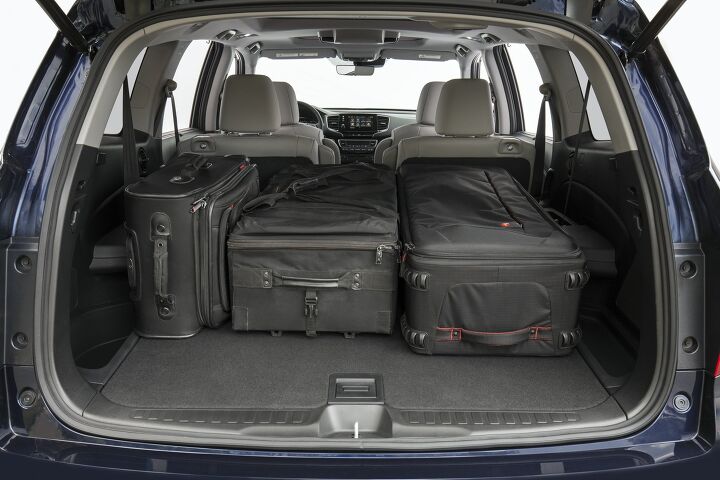





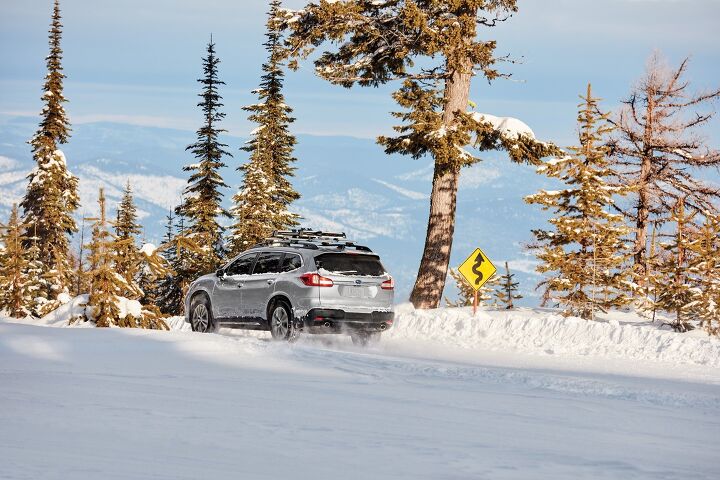
















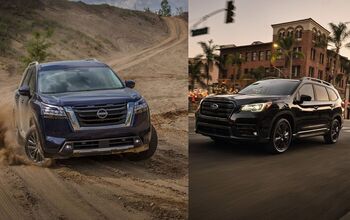
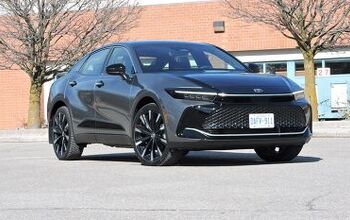
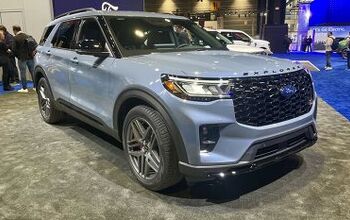



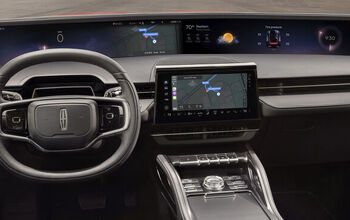

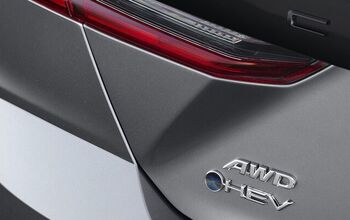


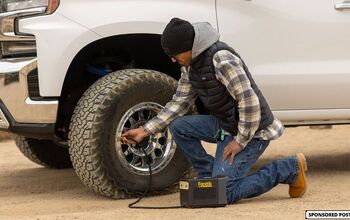


Comments
Join the conversation